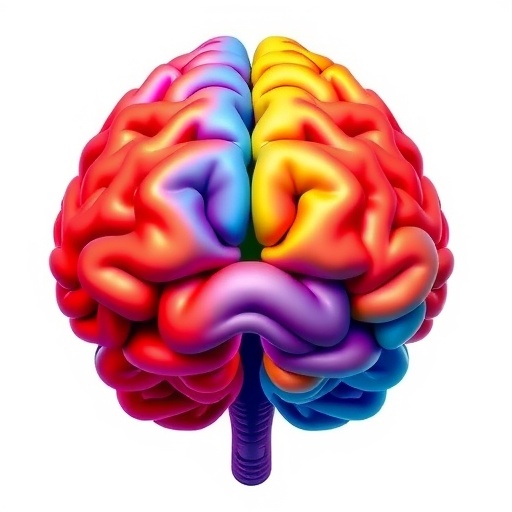Recent research has unveiled the complex interplay between childhood trauma and the neurobiological responses associated with Posttraumatic Stress Disorder (PTSD). Specifically, a new study conducted by Bastos and colleagues provides critical insights into how individuals with a history of childhood sexual abuse exhibit altered brain reactivity to distressing stimuli. This groundbreaking investigation employed functional Magnetic Resonance Imaging (fMRI) to illuminate the underpinnings of emotional processing in affected individuals.
The study’s focus revolves around a particularly distressing category of visual stimuli: pictures depicting human mutilation. These images evoke a range of psychological responses and can trigger significant emotional and physiological reactivity in most people. However, individuals who have endured severe trauma, such as childhood sexual abuse, often display blunted emotional responses. The research team aimed to explore how this phenomenon manifests in brain function, particularly in those diagnosed with PTSD.
Through a meticulously designed fMRI protocol, the researchers were able to capture and analyze the brain activity of participants as they were exposed to these highly distressing images. The findings revealed a striking contrast in brain reactivity among subjects with PTSD compared to control groups. Notably, specific brain regions typically associated with emotional processing, fear, and response to threat showed significantly reduced activation levels in those with a history of childhood trauma.
Among the areas where diminished activity was noted is the amygdala, a critical region for processing emotions, particularly fear and aggression. This finding suggests that individuals with PTSD may habituate to intensely distressing stimuli, possibly as a protective mechanism against overwhelming emotional pain. However, this blunted reactivity can also have deleterious effects, potentially leading to difficulties in emotional regulation and social interactions.
Furthermore, the study found that these alterations in brain reactivity were directly linked to the severity of PTSD symptoms. High levels of dissociation and numbing, commonly reported in individuals who have experienced early-life trauma, correlate with reduced brain activity in response to traumatic imagery. This poses questions about the adequacy of conventional therapeutic approaches that typically aim to enhance emotional engagement and processing for PTSD patients.
The researchers also considered the implications of these findings in a therapeutic context. Understanding the neurobiological basis of emotional blunting could influence treatment strategies, opening avenues for the development of targeted interventions that address these specific brain function anomalies. For instance, therapies that utilize gradual exposure to distressing stimuli could be tailored to account for the unique neurological pathways in these patients, potentially paving the way for more effective healing modalities.
In an era where mental health awareness is expanding, this study provides an alarming yet insightful reflection of the enduring consequences of childhood trauma. It emphasizes the importance of early intervention and specialized treatment approaches for those affected by PTSD stemming from adverse childhood experiences. Not only does it shed light on the biological aspects of these experiences, but it also advocates for a more nuanced understanding of the psychological ramifications.
The implications of this research extend beyond clinical settings; they provoke a broader societal dialogue regarding trauma, mental health, and healing. The blunted brain reactivity highlighted in this study serves as a stark reminder of the stark realities faced by survivors of childhood abuse. As awareness grows, it becomes increasingly critical for mental health professionals, educators, and society at large to recognize the signs and provide compassionate support for those who have suffered.
Additionally, this groundbreaking investigation aligns with a growing body of literature emphasizing the need to consider the neurobiological aspects of trauma in therapy. By integrating findings from fMRI studies into therapeutic practices, practitioners may enhance empathetic engagement while simultaneously addressing the biological disconnect that some patients experience. This dual approach could lead to a more holistic understanding of trauma, one that envelops both the emotional and biological facets of healing.
As these findings ripple through the fields of psychology, psychiatry, and neuroscience, they highlight an urgent need for further research. The current study lays a foundational stone for future inquiries to explore various impacts, such as the long-term effects of trauma on brain function and emotional health. Insights gained from subsequent studies could therefore hold the key to unraveling the complexities of PTSD and childhood abuse while fostering resilience and recovery for countless individuals facing similar struggles.
The collaboration among seasoned researchers in this study underscores the importance of interdisciplinary approaches to mental health. By bringing together expertise from neuroscience, psychology, and clinical practice, the team crafted a research framework that allows for a richer understanding of the nuances associated with childhood trauma and PTSD. This collaborative effort may indeed inspire other professionals to embrace similar integrative practices.
In conclusion, Bastos and colleagues have provided an important lens into the neurobiological implications of childhood trauma. Their work not only elucidates the reduced brain reactivity in response to distressing stimuli but also emphasizes how these changes can affect emotional and social functioning in affected individuals. Further exploration in this domain will undoubtedly help refine therapeutic practices, empowering survivors and guiding them towards a path of healing and recovery.
Subject of Research: The neurobiological effects of childhood sexual abuse and PTSD on emotional reactivity.
Article Title: Blunted Brain Reactivity To Mutilation Pictures in Patients with Posttraumatic Stress Disorder and Exposure To Childhood Sexual Abuse: An fMRI Study.
Article References:
Bastos, A.F., de Oliveira, L., Pereira, M.G. et al. Blunted Brain Reactivity To Mutilation Pictures in Patients with Posttraumatic Stress Disorder and Exposure To Childhood Sexual Abuse: An fMRI Study.
Journ Child Adol Trauma (2025). https://doi.org/10.1007/s40653-025-00788-w
Image Credits: AI Generated
DOI:
Keywords: PTSD, childhood trauma, blunted brain reactivity, fMRI, emotional processing.




